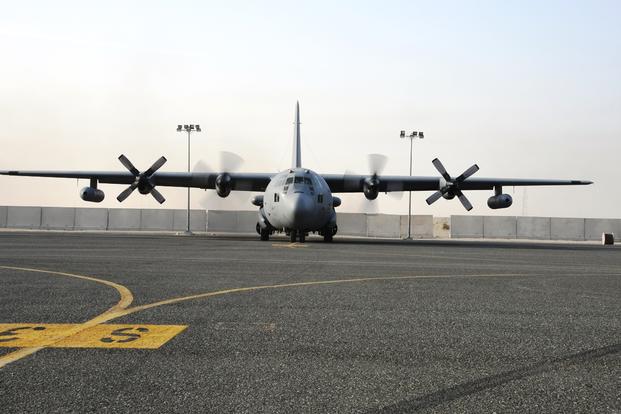SIMI VALLEY, Calif. -- The U.S. Air Force is preparing to brief the most recent findings of a year-long concept of operations study on electronics warfare that examines how the Pentagon can protect its equipment and deny data access to emerging global threats.
Officials will discuss the findings at the Weapons and Tactics Conference, known as WEPTAC, at Nellis Air Force Base, Nevada, in mid-January, Air Force Vice Chief of Staff Gen. Stephen 'Seve' Wilson said.
The goal of the study was to understand where and how an attack manifests on the electromagnetic spectrum and how best to deny the adversary, Wilson said.
"We need to know what part of the spectrum is being denied and be able to get the data out from whatever or wherever it is, through whatever means at the time or the place that [we] can," he said during an interview with Military.com at the Reagan National Defense Forum.
The Electronic Warfare Enterprise Capability Collaboration Team, or ECCT, is designed to give the Defense Department the road map to be able to do three things, according to Wilson. Those include determining, "Who's in charge, what's the plan, and then timeline and deliverables from that plan?" he said. "We as a department took our eyes off the importance of this, and we've all clearly in the last few years seen how important this is."
Wilson did not detail whether this means a new top staff position for the Air Force dealing solely with EW, but said, "You're going to see somebody in charge … and marching down the timeline. ... All the services have come to a realization of how important this is to the joint war fight."
Related content:
- In Tech, US Must Be Where Russia, China Are Not: Air Force Scientist
- Air Force Eyes Next-Gen Electronic Warfare
- The Days of Secret Military Operations May Soon Be Over. Does That Matter?
He said the service "canvassed the country" to speak to leading experts at think tanks, tech companies, joint service teams and innovators who can push the envelope in developing new products for the next ECCT study.
"We are dependent on the spectrum for everything that we do. You can use any domain. And the spectrum is critical to the use of that domain," Wilson said.
This applies to cyber, space and anything that is dependent on a network, including GPS, radios and satellites, he said.
"Our sensors run through a spectrum, our data links run through a spectrum, our weapons, to get to the target ... and if somebody controls or dominates that ... he, who dominates it wins," Wilson said. "We pride ourselves as one of the services that's able to bring ideas from the lab bench to the warfighter. And how do I do that faster and smarter? This is about the joint war fight."
Officials for months have been shying away from describing a "silver bullet" weapon that can solve technology gaps. The Air Force, for example, has repeatedly spoken of a family of systems and a networked approach to advance its strategies against high-end threats.
Wilson cited jamming techniques used by Russia against Ukraine, as well as in Syria, as models for how threats are advancing.
"It has to be thought of in everything that we do -- all of our doctrine, training, operations -- it's not one thing that's going to do it," he said.
Electronic warfare is a popular method in Eastern Ukraine to disrupt operations. For months, Russian-backed separatists have been jamming signals to misdirect or destroy commercial drones that Ukrainian soldiers use to conduct aerial surveillance. The move, first observed in 2014, caused U.S. troops to be more aware as they trained Ukrainian guardsmen on the western side of the country.
Russia then expanded its electronic warfare testing ground to Syria. "Right now, in Syria, we're in the most aggressive [electronic warfare] environment on the planet from our adversaries," said Gen. Raymond A. Thomas III on April 25 at the U.S. Geospatial Intelligence Foundation's GEOINT 2018 Symposium.
"They're testing us everyday -- knocking our communications down, disabling our AC-130s, etc.," he said during his speech, using the jamming example to underline the need for more data security as the multi-domain battlespace expands.
Wilson said the Pentagon already is implementing some of the plans from the study. "We're going to continue the effort," he said.
-- Oriana Pawlyk can be reached at oriana.pawlyk@military.com. Follow her on Twitter at @Oriana0214.










